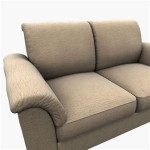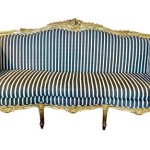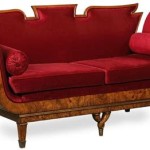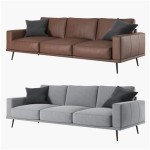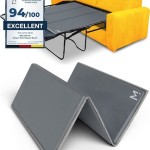Sofa Without Backrest: A Modern Seating Solution
Sofas without backrests, also known as backless sofas, divans, or benches, offer a unique approach to seating arrangements. They deviate from traditional sofa designs, providing flexibility and a contemporary aesthetic that can enhance various interior design styles. This article explores the characteristics, benefits, and applications of these versatile furniture pieces.
One primary advantage of backless sofas is their inherent adaptability. They can be positioned in the center of a room, acting as a subtle divider without obstructing sightlines. This makes them particularly suitable for open-plan living spaces, where maintaining a sense of spaciousness is paramount. Furthermore, their lack of a back allows for easy access from all sides, facilitating conversation and interaction within a room.
The streamlined profile of backless sofas contributes to a minimalist and contemporary look. Their simple design often features clean lines and geometric shapes, complementing modern and minimalist interior design schemes. They provide a sense of understated elegance, allowing other design elements, such as artwork or decorative accessories, to take center stage.
Beyond their aesthetic appeal, backless sofas provide functional versatility. They can serve as extra seating in larger living areas or as a stand-alone piece in smaller spaces. Their adaptability extends to their use as a platform for decorative cushions, throws, and blankets, adding layers of texture and visual interest to a room. They can also function as an impromptu daybed for relaxation.
Backless sofas are available in a wide range of materials, catering to diverse tastes and preferences. Upholstery options include leather, velvet, linen, and various synthetic fabrics, allowing for seamless integration with existing decor. The frame construction can incorporate materials like wood, metal, or acrylic, further enhancing the design versatility of these pieces.
The size and shape of backless sofas also vary considerably. They can range from compact two-seater benches to expansive pieces capable of accommodating multiple individuals. Shapes can include rectangular, square, circular, or curved designs, providing options to suit different room layouts and aesthetic preferences.
Consider the existing furniture and decor when integrating a backless sofa into a room. In a minimalist setting, a simple, upholstered bench in a neutral color can complement the uncluttered aesthetic. Conversely, a more ornate design with intricate detailing might be suitable for a traditional or eclectic interior.
Placement is a key factor in maximizing the functionality and aesthetic impact of a backless sofa. Positioning it in the center of a room can create a focal point and define separate zones within an open-plan layout. Placing it against a wall, adorned with cushions and throws, can transform it into a comfortable and inviting seating area.
Pairing backless sofas with other furniture pieces can further enhance their functionality and visual appeal. Combining them with armchairs or traditional sofas creates a layered and dynamic seating arrangement. Adding a coffee table in front allows for convenient placement of drinks and other items.
Accessorizing a backless sofa can elevate its visual appeal and enhance its comfort. Decorative cushions and throws add texture and color, while carefully chosen rugs can delineate the seating area and anchor the space. The use of accent lighting can also highlight the sofa and create a warm and inviting atmosphere.
Maintaining a backless sofa involves regular cleaning and care, much like any other upholstered furniture. Vacuuming or brushing the upholstery helps remove dust and debris. Spot cleaning can address spills and stains, while professional cleaning may be necessary for deeper cleaning and maintenance.
The versatility of backless sofas extends beyond residential applications. They are also frequently used in commercial spaces such as lobbies, waiting areas, and retail environments. Their adaptability and aesthetic appeal make them a suitable choice for creating stylish and functional seating arrangements in various professional settings.
Choosing the right backless sofa involves careful consideration of several factors. These include the size and layout of the room, the existing decor, and the intended use of the piece. Considering these factors will ensure a harmonious integration of the backless sofa into the overall design scheme.
The popularity of backless sofas continues to grow as individuals seek versatile and stylish seating solutions. Their adaptability, minimalist aesthetic, and functional benefits make them a desirable choice for both residential and commercial environments. Whether used as a standalone piece or incorporated into a larger seating arrangement, backless sofas offer a fresh and contemporary approach to interior design.

Green Modern 3 Seater Without Back Sofa Living Room 5 Inch

Up 3 Seater Without Backrest Architonic Living Room Decor Guide Bed Stool Bedroom Furniture Design

Half Couch With Out Back Rest Luxury Sofa Design

Steel Settee Without Backrest 3 Seater

Premium Photo Sofa Without Backrest Painted In Silver On A White Background

Ran Lounge Couch The Home Dekor Upholstered Daybed Sofa Set

K Cube S3 Sofa Without Backrest

Rectangular Sofa Without Backrest Form Office Reality

Teak Wood Wooden Bench Couch Without Backrest

Area 3 Seat Sofa Without Armrests Midj


